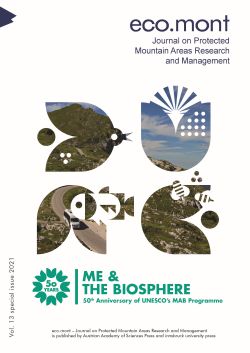
Eco.mont Vol. 13 special issue 2021, pp. 27-37, 2021/11/23
Journal on Protected Mountain Areas Research and Management

This article examines whether the Serengeti-Ngorongoro Biosphere Reserve, Tanzania, is successfully mitigating the immense challenges that rising population density and growing land-use pressure, as well as climate change and tourism, pose to vulnerable biodiversity hotspots, such as ancient Afromontane forests. The biosphere reserve’s management approach to ecological and socio-cultural heritage was analysed using the Global-Local Drivers of Change model as a theoretical basis, together with The Economics of Ecosystems and Biodiversity (TEEB) analysis framework. This empirical study of a relatively old Sub-Saharan African biosphere reserve (established in 1981) used a qualitative research approach, where data was collected from focus groups living in the reserve, and semi-structured interviews with Ngorongoro Conservation Area officials and other main stakeholders. Results show that the management focus on environmental conservation over socio-cultural heritage has led to population growth, cultural change and landscape transformation, leading to human-wildlife conflicts and negative park-people relationships. It is concluded that this biosphere reserve needs to better exploit its vast potential and adjust its institutional structure and operational strategies to align with modern Other Effective Area-Based Conservation Methods.
Keywords: biosphere reserve, human-wildlife conflicts, park-people relations, Serengeti-Ngorongoro, Sub-Saharan Africa